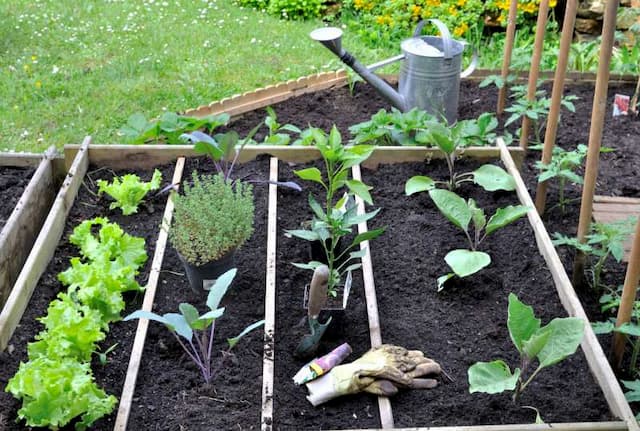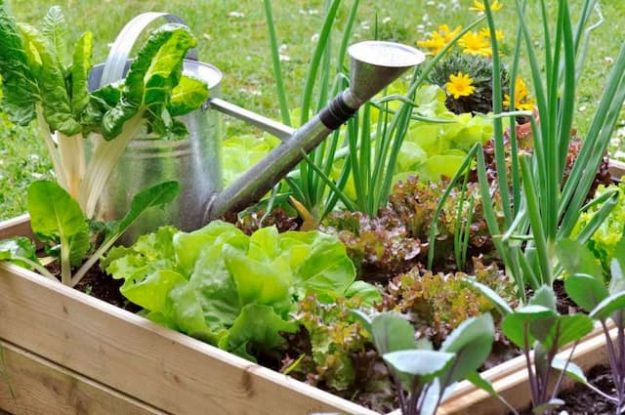Garden: Five Tips for a Successful Vegetable Patch

With good weather, we all want beautiful vegetables … but we do not have the land to sow or plant. The solution: the vegetable patch! We tell you everything.
Whether you want to grow aromatics, salads or tomatoes, raised gardening obeys certain principles, guaranteeing good results. We explain to you.
1. Choose the structure
The gardens squares are often made of wood , an interesting material for building raised beds, especially as there are several options: wood pallet, laminated wood, lumber, wooden slabs, recycled pallets and beams, woven willow also, ready-to-assemble kits …
Apply a coat of wood stain or eco-friendly paint and double inside a waterproof tarpaulin.
Three other materials are also usable: stone (natural stone, concrete, bricks, garden slabs), metal (insulate the internal walls with polystyrene plates) and plastic .
2. Make a good growing medium
Once installed in a sunny place, fill your square with the technique of ” three-layer potting soil “, guaranteeing a vigorous growth of vegetables and herbs, thanks to an optimal development of micro-organisms of the soil, to a satisfactory retention of the rainwater or watering, and at a solid anchoring of the roots.
First fill 30 to 50 cm of coarse and undecomposed material (branches, twigs, wood chips, hedge residue) that will drain the garden.
Then 20 to 30 cm of compost and vegetable waste more or less decomposed which constitute a stock of nutrient.
And, finally, a mix of garden soil and sifted compost (or raised bed soil).
3. Consider an enhancement and a blanket
To prolong the growth of plants, therefore, the production season, a vegetable patch can be accessorized with a non-woven blanket, a plastic blanket or a glazed frame that will transform the vegetable patch into a mini greenhouse, increasing the temperature and humidity.
Avoid the glass pane that might break but opt instead for a reinforced mesh film, or polycarbonate, a plastic film or even the wintering veil.
Also remember to regularly ventilate the massif to avoid overheating and reduce the humidity that can promote the spread of diseases.
4. Block access to gastropods
Snails and slugs crawl easily on vertical walls. To prevent them from eating your crops, attach tape around the bed. “And if you insulate your wooden tank from the ground by installing it on a layer of stone slabs or bricks or even on a frame made of galvanized sheet metal, foresee a beveled metal rim and directed downwards and inside”, says the author Folko Kullmann of My raised kitchen garden , Editions Delachaux and Niestlé .
In the garden directly, biological anti-slug granules based on iron phosphate will fight against snail eggs.
5. Maintain your square vegetable garden

Watering must be regular and sufficient, but without excess humidity.
From the first cold nights, the installation of a wintering veil is a good protection for the vegetable patch. In autumn, once empty bins after harvest, install a green manure (rapeseed or alfalfa) that will grow quickly and avoid leaving the bare soil surface.
After a few years, consider renewing the substrate at the beginning of a new season.
Enjoyed this? Get the week’s top France stories
One email every Sunday. Unsubscribe anytime.


